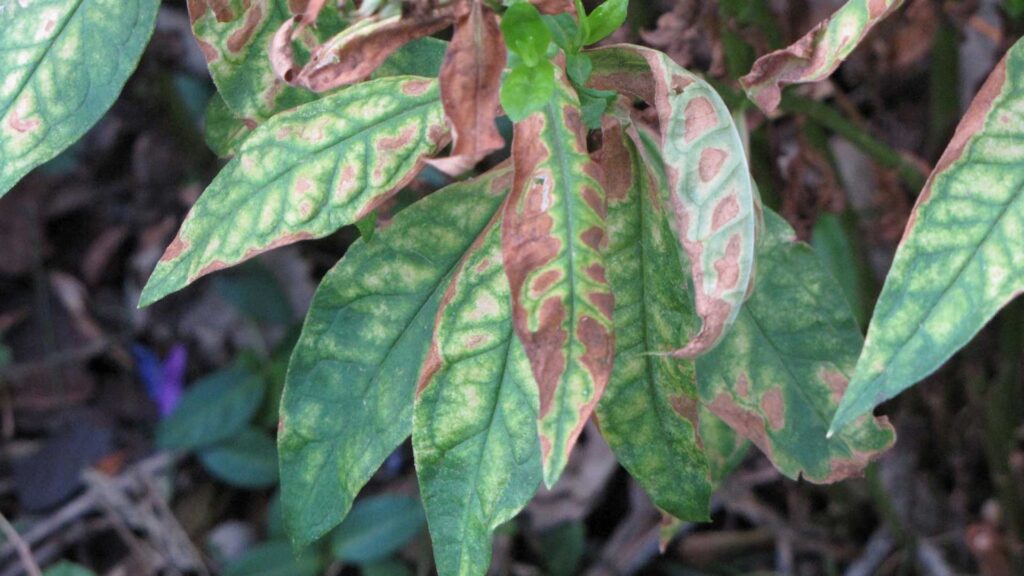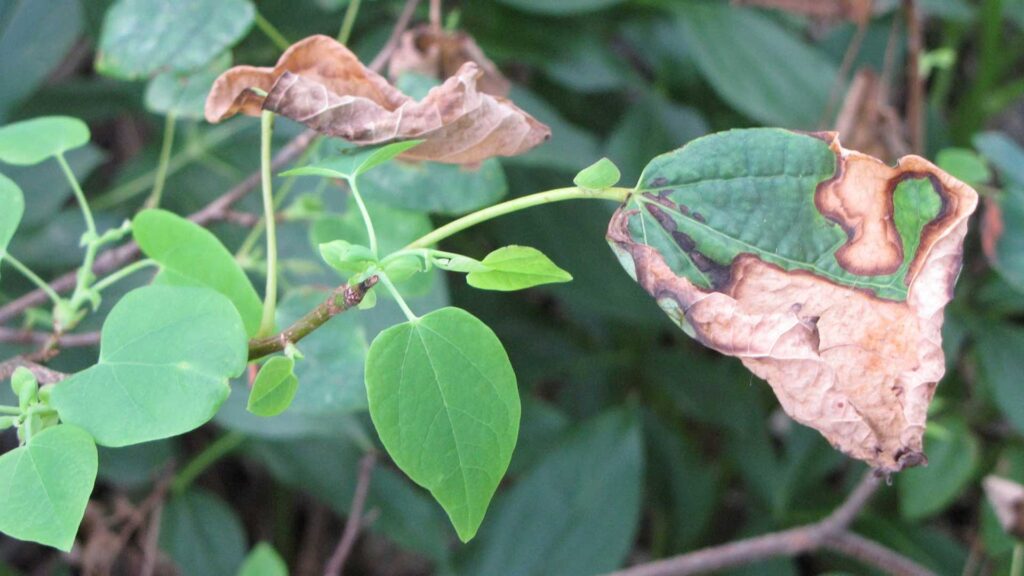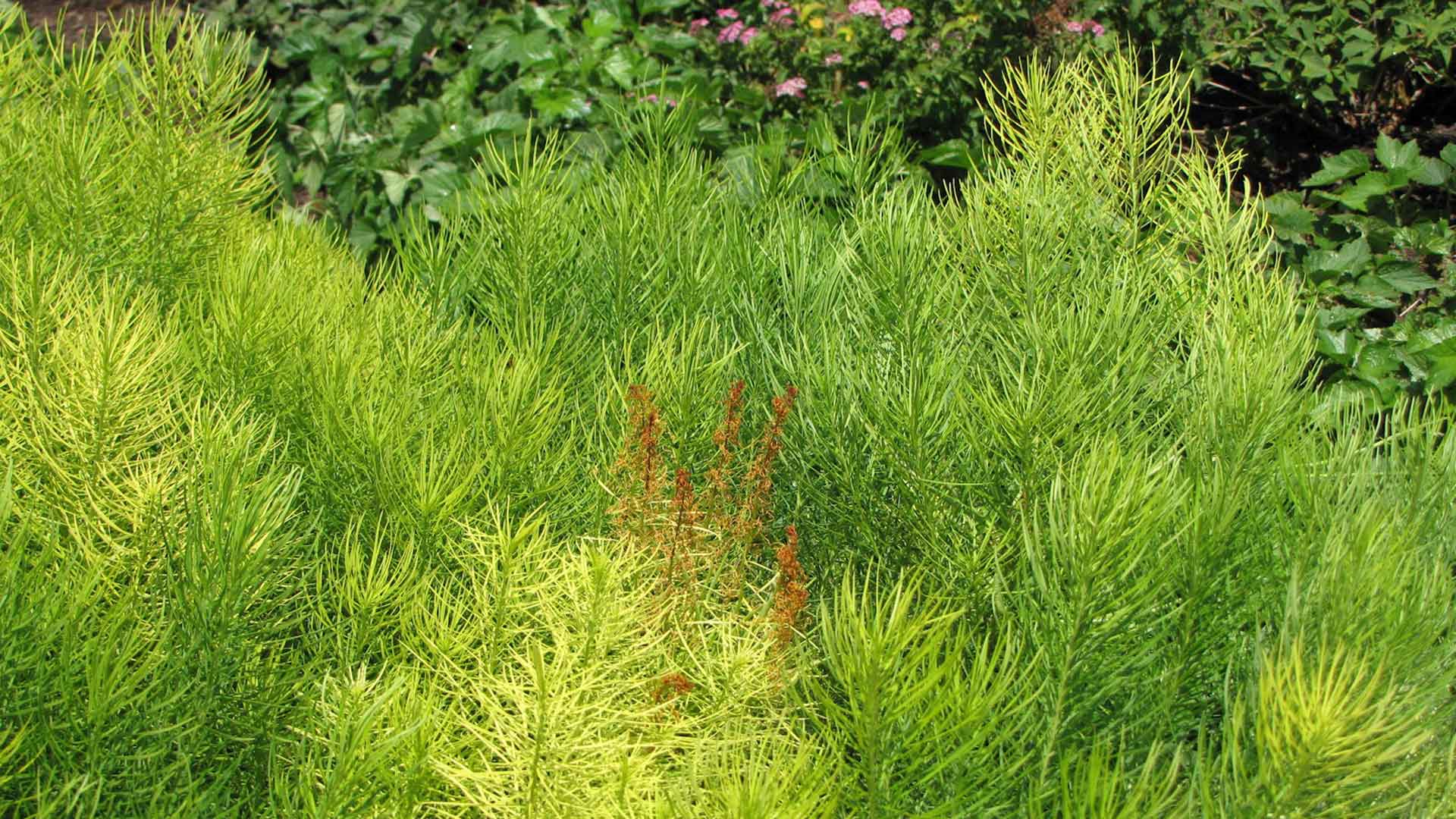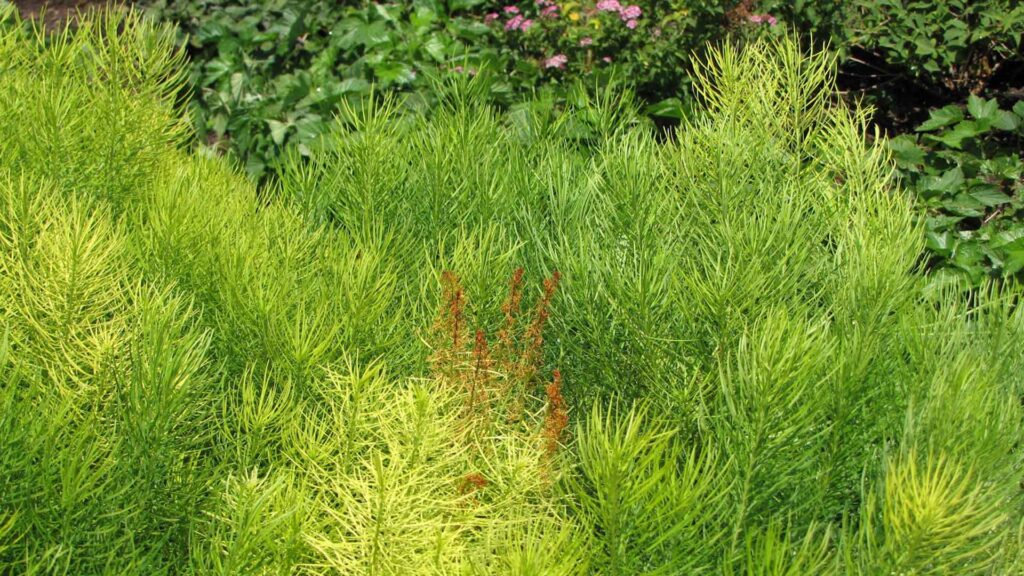Wow. It has been a tough summer all over – too much rain, too little rain, too much heat, too much heat, and too much heat. If, like me, you live in an area that is suffering from a severe rain deficit – and like me, you could not even begin to match plant needs with hose action – you will be seeing some incredible variances in plant response.
Amsonia tabernaemontana and Amsonia hubrichtii have shown remarkable drought tolerance – especially given my yard’s exposure to Round Up over-spray this spring (thank the neighbor). When surrounding perennials went toes up, the Amsonia species were calmly holding their own.
The behavior of my beloved Phlox paniculata ‘Peacock Series’ (‘White’ and ‘Neon Rose’) caused me to rethink that affection as they did not perform well (at all) throughout the months of intensely dry, high temperature conditions. Even those planted in partial shade just couldn’t even pretend to thrive. I watched as the leaves discolored, the plants continually refused to show any response to the water (yes, it was meager) provided. Eventually goodbyes were uttered, as it appeared to be a permanent decline. But to my surprise, and delight, new leaves eventually emerged and, now, continue to develop. Although they still look rather wicked from an overall perspective, growth is happening. I love it when plants surprise me.

Whether the effects are obvious or a bit more insidious, lots of plants are certainly suffering. Normal treatments need to be modified, depending on plant reactions to the conditions. What changes need to be made? Stick with advised water needs for your area and soil type. Generally for established plants, that means the equivalent to 1” of rainfall per week. For new plants that moisture need rises to the equivalent of about 2” of rainfall per week. During periods of drought, do the best you can while staying within area water guidelines and/or bans.
In the case of fertilizer, as summer blends into fall, the general recommendation is to hold off fertilizing until after normal leaf fall – or in the northern regions, until we’re hit with at least a couple of good, hard frosts. This year, the extended drought has created a period of dormancy extensive enough for the plants to re-leaf, re-bloom (August Magnolia blooms in my Wisconsin yard?!), and/or re-grow (new asparagus spears in August as well) – all, of course at non-usual times. Well…that places severe demand on plant system reserves. As those reserves are depleted, provision of additional nutrients will assist those plants in restoring reserve levels, ultimately reducing plant system stress during the upcoming spring.
Appropriate timing of fertilizer applications is crucial at this time of the year. For those plants that are sporting a second (or third) set of leaves, get a light application of a balanced fertilizer down and watered in NOW. For those trees and plants that are holding on to this year’s first set of leaves, wait until the generally recommended time – after leaf fall. The worst thing you could do is to encourage any more new growth that will not harden off before winter arrives. Creating additional stress on the plant system is not what we need this, or any, year.

As always, an overall, a planned fertility program is preferred to the shotgun approach (throw everything at anything or anything at everything). Thinking wholistically and planning ahead are invaluable for maintaining your plants. Start with a panel of quality soil tests from various planting areas of your yard – e.g. grasses, ornamentals, trees, vegetables – as all need differing levels of care and potentially different product formulations. Start with the tests, then plan, and execute a fertility program that will get the most out of your plants, and your pocket book.

